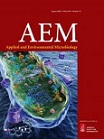The mandelate pathway, an alternative to the PAL pathway for the synthesis of benzenoids in yeast
Dublin Core
Título
The mandelate pathway, an alternative to the PAL pathway for the synthesis of benzenoids in yeast
Tema
LEVADURAS
BENZENOIDES
BIBLIOGRAFIA NACIONAL QUIMICA
2020
HIDROCARBUROS AROMATICOS
Abstract
Benzenoid-derived metabolites act as precursors for a wide variety of products involved in essential metabolic roles in eukaryotic cells. They are synthesised in plants and some fungi through the phenylalanine ammonia lyase (PAL) or tyrosine ammonia lyase (TAL) pathways. Ascomycete yeasts and animals both lack the capacity for PAL/TAL pathways, and metabolic reactions leading to benzenoid synthesis in these organisms have remained incompletely known for decades. Here we show genomic, transcriptomic and metabolomic evidence that yeasts use a mandelate pathway to synthesise benzenoids, with some similarities to pathways used by bacteria. We conducted feeding experiments using a synthetic fermentation medium that contained either 13C-phenylalanine or 13C-tyrosine and, using methylbenzoylphosphonate (MBP) to inhibit benzoylformate decarboxylase, we were able to accumulate intracellular intermediates in the yeast Hanseniaspora vineae. To further confirm this pathway, we tested three mutants in separate fermentation experiments with deletions in the key genes putatively proposed to form benzenoids (Saccharomyces cerevisiae aro10Δ, dld1Δ and dld2Δ). Our results elucidate the mechanism of benzenoid synthesis in yeast through phenylpyruvate linked with the mandelate pathway to produce benzyl alcohol and 4- hydroxybenzaldehyde from the aromatic amino acids, phenylalanine and tyrosine, as well as sugars. These results provide an explanation for the origin of the benzoquinone ring, 4-hydroxybenzoate, and suggest Aro10p has benzoylformate and 4-hydroxybenzoylformate decarboxylase functions in yeast. Keywords: phenylpyruvate pathway, yeast, benzyl alcohol, Hanseniaspora vineae, 4- hydroxybenzoic acid, benzoylformate decarboxylase, ARO10, coenzyme Q.
Autor
Valera, María José
Boido, Eduardo
Ramos, Juan Carlos
Manta, Eduardo
Radi, Rafael
Dellacassa, Eduardo
Carrau, Francisco
Fuente
Applied and Environmental Microbiology, 2020. -- p. 1-38
Editor
American Society for Microbiology
Fecha
2020
Derechos
Información sobre Derechos de Autor (Por favor lea este aviso antes de abrir los documentos u objetos) La legislación uruguaya protege el derecho de autor sobre toda creación literaria, científica o artística, tanto en lo que tiene que ver con sus derechos morales, como en lo referente a los derechos patrimoniales con sujeción a lo establecido por el derecho común y las siguientes leyes (LEY 9.739 DE 17 DE DICIEMBRE DE 1937 SOBRE PROPIEDAD LITERARIA Y ARTISTICA CON LAS MODIFICACIONES INTRODUCIDAS POR LA LEY DE DERECHO DE AUTOR Y DERECHOS CONEXOS No. 17.616 DE 10 DE ENERO DE 2003, LEY 17.805 DE 26 DE AGOSTO DE 2004, LEY 18.046 DE 24 DE OCTUBRE DE 2006 LEY 18.046 DE 24 DE OCTUBRE DE 2006) ADVERTENCIA - La consulta de este documento queda condicionada a la aceptación de las siguientes condiciones de uso: Este documento es únicamente para usos privados enmarcados en actividades de investigación y docencia. No se autoriza su reproducción con fines de lucro. Esta reserva de derechos afecta tanto los datos del documento como a sus contenidos. En la utilización o cita de partes debe indicarse el nombre de la persona autora.
Formato
PDF
Idioma
Inglés
Tipo
Artículo
Identificador
doi:10.1128/AEM.00701-20
Document Item Type Metadata
Original Format
PDF
- Fecha de agregación
- July 20, 2020
- Colección
- Bibliografía Nacional Química
- Tipo de Elemento
- Document
- Etiquetas
- Benzenoides, Hidrocarburos aromáticos, Levaduras
- Citación
- Valera, María José, “The mandelate pathway, an alternative to the PAL pathway for the synthesis of benzenoids in yeast,” RIQUIM - Repositorio Institucional de la Facultad de Química - UdelaR, accessed July 26, 2024, https://riquim.fq.edu.uy/items/show/6108.
- Archivos

